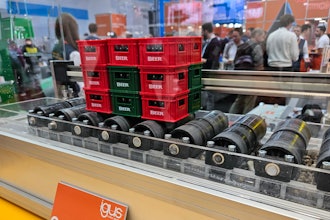OK, IMPO readers, it’s time we sat down and had a little chat about the birds and, well, the birds.
In late September I attended the National Safety Council Expo in Indianapolis, IN. Walking the expo floor, I met with many exhibitors displaying the latest clothing, gear and technology designed to keep employees safe.
However, one booth especially caught my attention. Pictured on a large white backdrop were two pigeons locked in an embrace with the words “Ask Us About Birth Control For Birds.” So, naturally, I did.
The booth was run by Innolytics, which was showcasing a ready-to-use bait that controls the reproduction of birds. At IMPO, we cover a lot of health, safety and maintenance issues, but one I never considered is the damaging effects roosting pigeons could have at manufacturing facilities, oil refineries or power plants.
Apparently, a flock of 100 pigeons can produce 4,800 pounds of waste annually. That… is a lot of poop.
As someone with a pigeon coop in their front yard, I can attest that these animals — while beautiful and fascinating — reproduce like it’s the end of the world and can be seriously messy if not kept under control.
When I spoke with Innolytics chief science officer Alexander MacDonald, PhD at the booth, I learned that not only are pigeon droppings a pain to clean off of rafters and roofs, it can also get into sensitive equipment causing damage. In addition, the birds, their waste and nests also pose slip and fall hazards, as well as health risks to employees. Not to mention the issues that arise if you’re a manufacturer in the food industry with a pigeon problem.
MacDonald said there are other options out there for pigeon control — such as owl decoys, reflectors, spikes, poison and trapping. But they aren’t always effective. I can’t be the only one who’s seen pigeons sitting on plastic owls or making a nest between the spikes on window ledges.
However, MacDonald says their product, which prevents the pigeons’ eggs from hatching, is an easy and cost effective population control option. And, as an added bonus, the bait is registered with the EPA and has no secondary effects in birds of prey. It’s always great to see innovative solutions on the market that can help manufacturers control pest populations without causing harm to themselves or the unwanted critter. In addition to the reproduction control, there are a variety of other options available from various manufacturers to be explored.
Winter is right around the corner and unlike a lot of species, pigeons breed year-round. There is no time like the present to weigh pest control options. Because, as MacDonald said, “one pigeon is no problem. The problem is, there’s no such thing as one pigeon.”






















